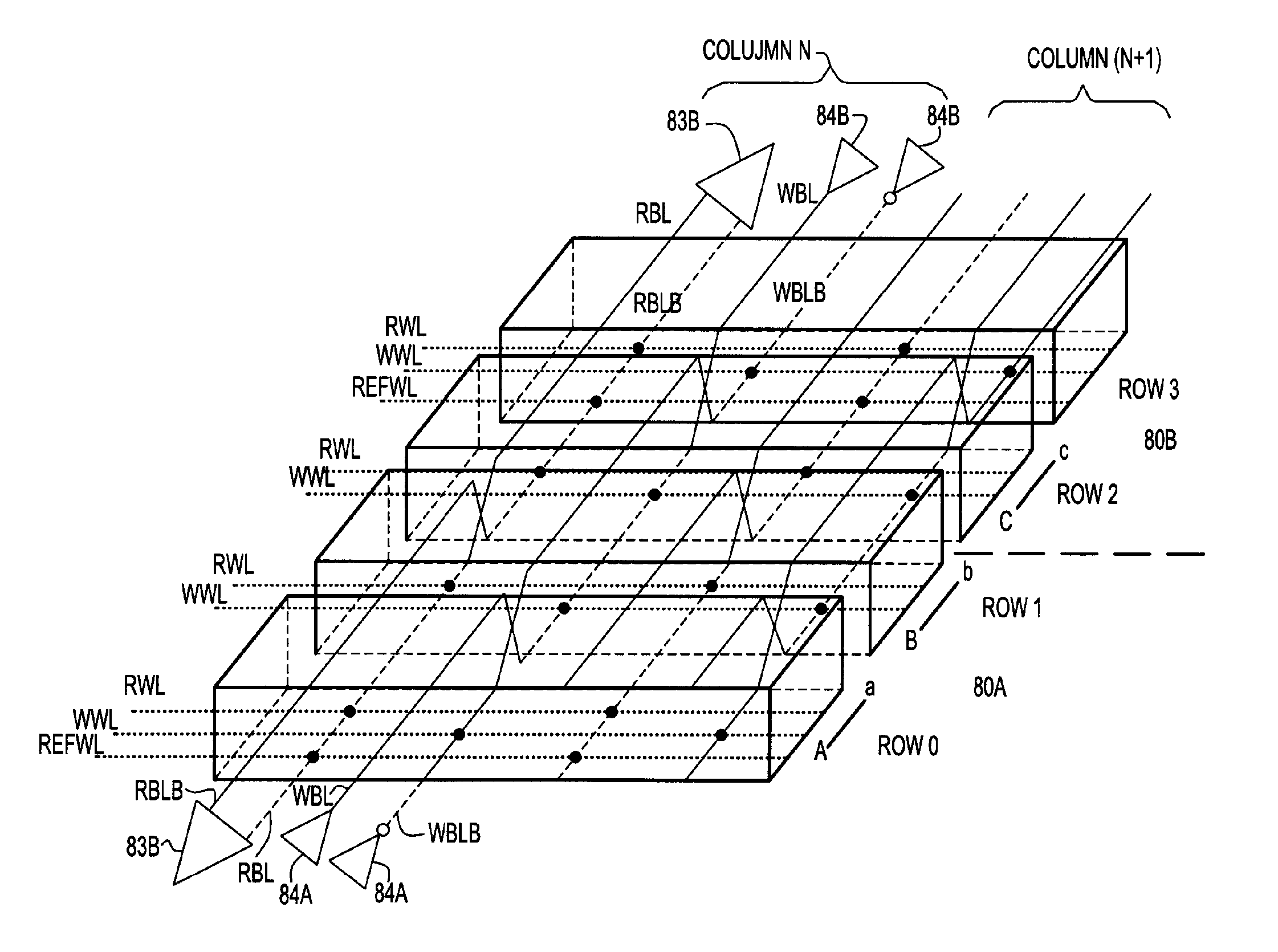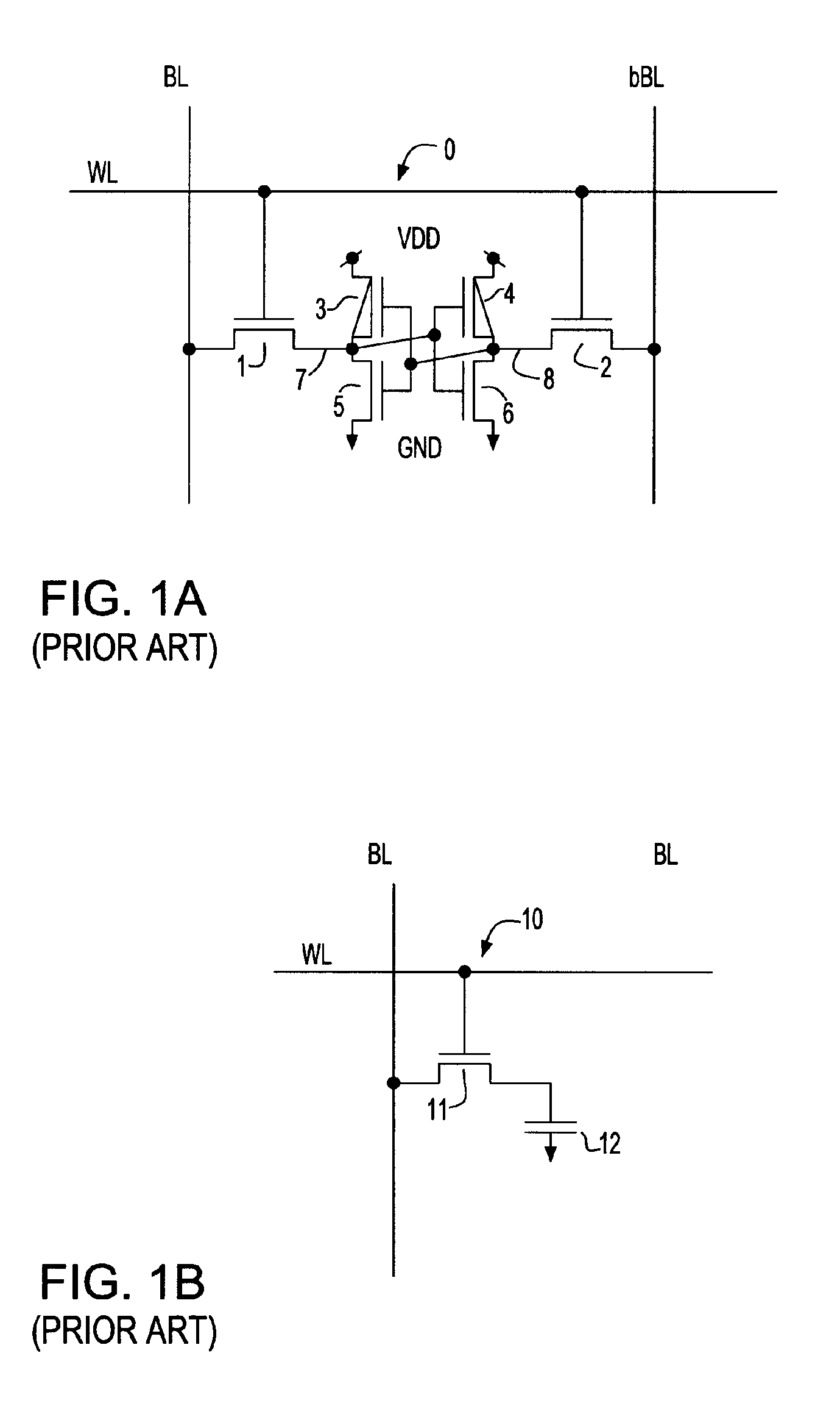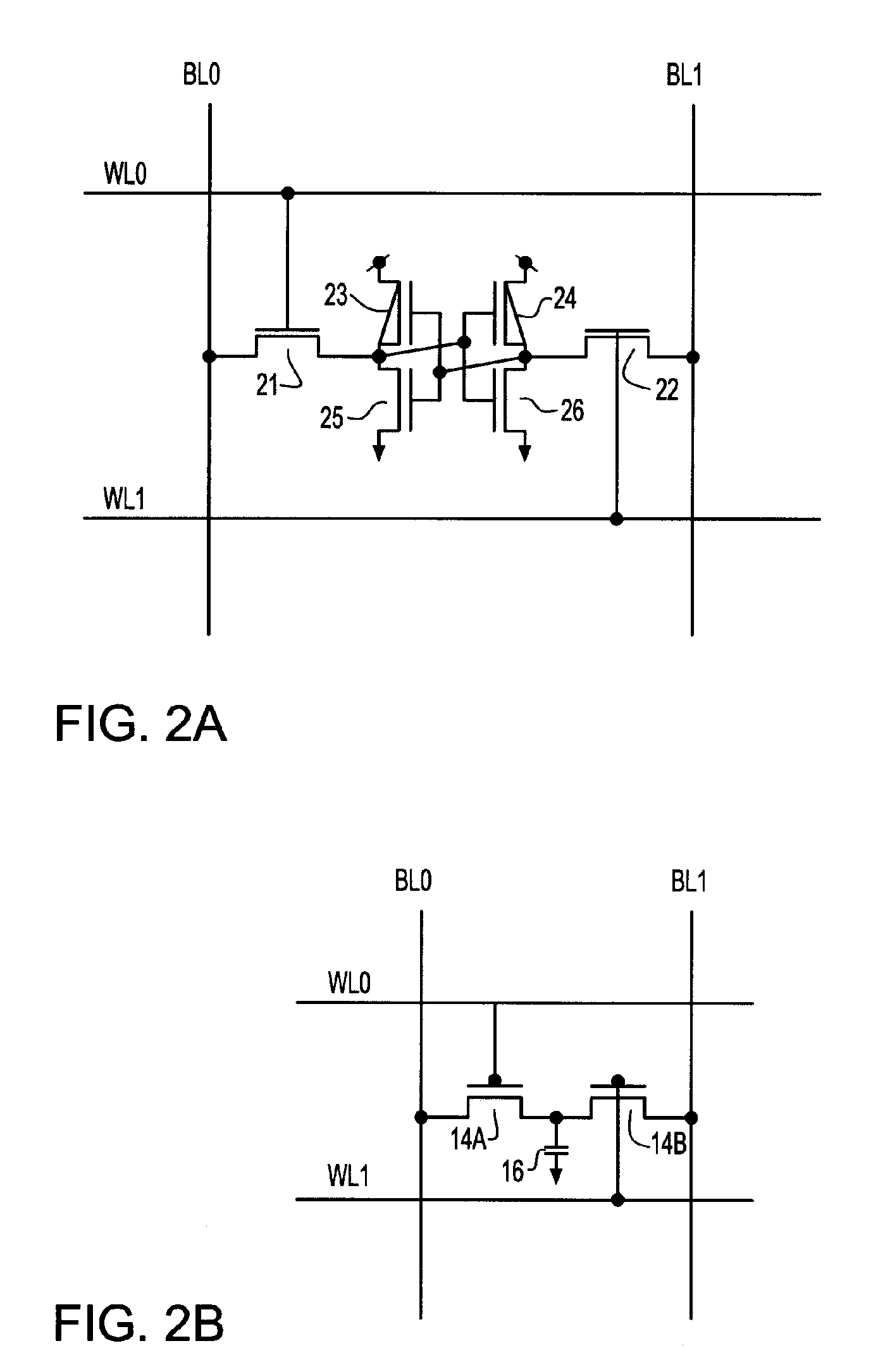Three Dimensional Twisted Bitline Architecture for Multi-Port Memory
a multi-port memory and bitline technology, applied in the direction of digital storage, instruments, semiconductor devices, etc., can solve the problems of data contention on the common bl, potential rbl and wbl coupling noise, and simultaneous read and write operation difficult or potentially impossible, and achieve reliable differential sensing
- Summary
- Abstract
- Description
- Claims
- Application Information
AI Technical Summary
Benefits of technology
Problems solved by technology
Method used
Image
Examples
Embodiment Construction
[0022]FIG. 6 shows a first method to overcome the problem described in the copending application Ser. No. 10 / 604,994, filed Aug. 29, 2003 and incorporated by reference in its entirety. A single memory array 60 comprises a plurality of 3 T gain cells arranged in a matrix. However, other memory cells, which have a read and write port, may be used to configure a memory array. The single memory array is further divided into two memory sections 60A and 60B. Each WBL is extended into the two memory sections 60A and 60B. On the other hand, each RBL 67 in a same column is divided into two local RBL (LRBLA and LRBLB). Each memory column further contains hierarchical read bitlines 66 (HRBLA and HRBLB) that do not connect to the cells. They are arranged over the LRBLA and LRBLB in a different wiring layer. LRBLA and LRBLB (line 67) are coupled to the HRBLB and HRBLA (line 66) respectively by vertically twisting structure 68.
[0023] The effect of the twisting structure 68 is that the two sectio...
PUM
 Login to View More
Login to View More Abstract
Description
Claims
Application Information
 Login to View More
Login to View More - R&D
- Intellectual Property
- Life Sciences
- Materials
- Tech Scout
- Unparalleled Data Quality
- Higher Quality Content
- 60% Fewer Hallucinations
Browse by: Latest US Patents, China's latest patents, Technical Efficacy Thesaurus, Application Domain, Technology Topic, Popular Technical Reports.
© 2025 PatSnap. All rights reserved.Legal|Privacy policy|Modern Slavery Act Transparency Statement|Sitemap|About US| Contact US: help@patsnap.com



